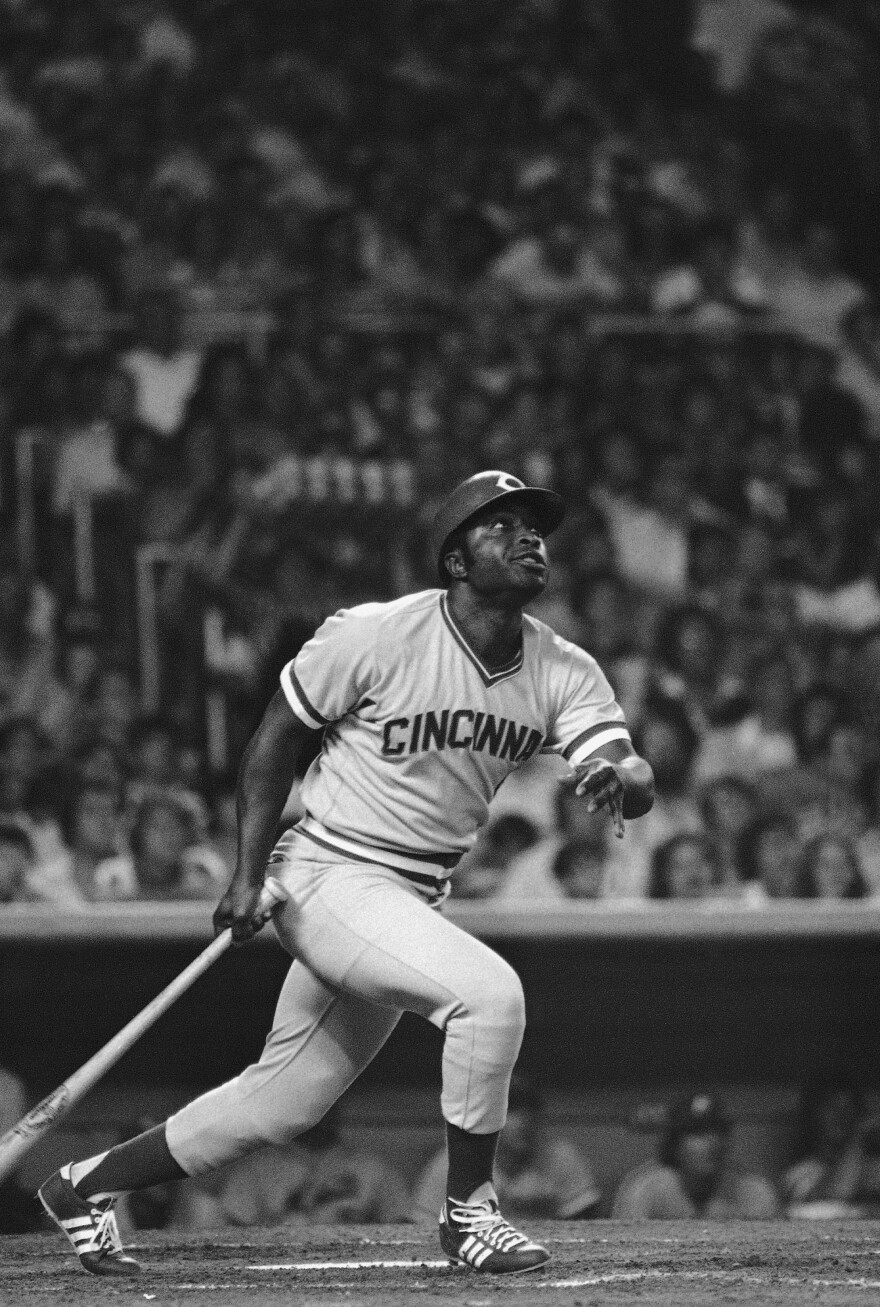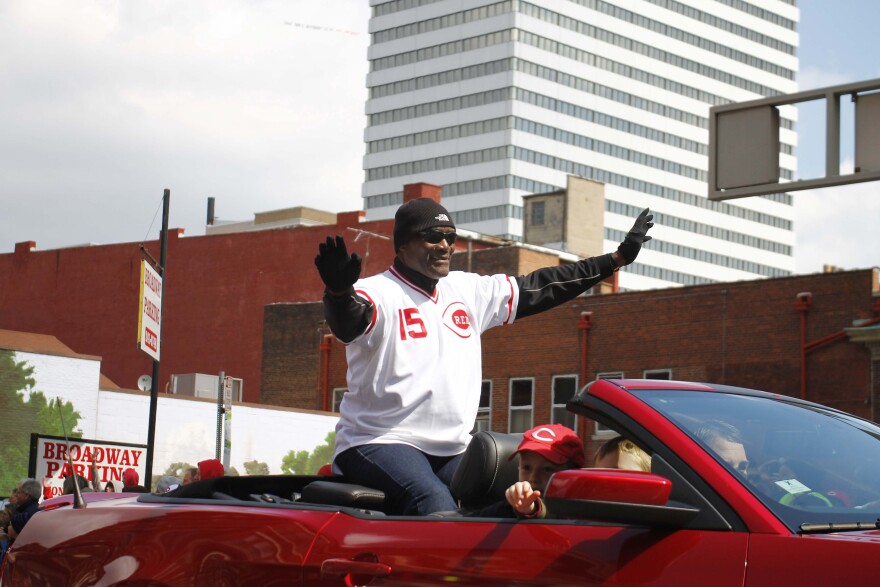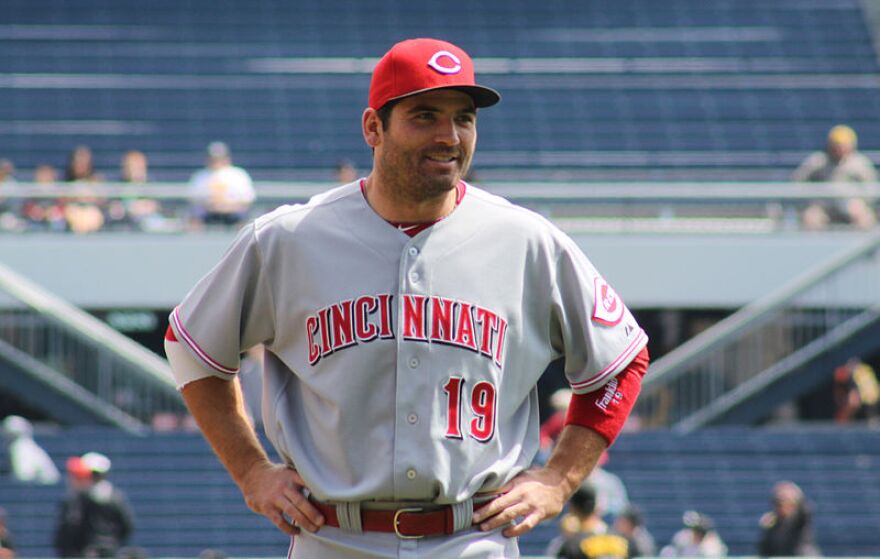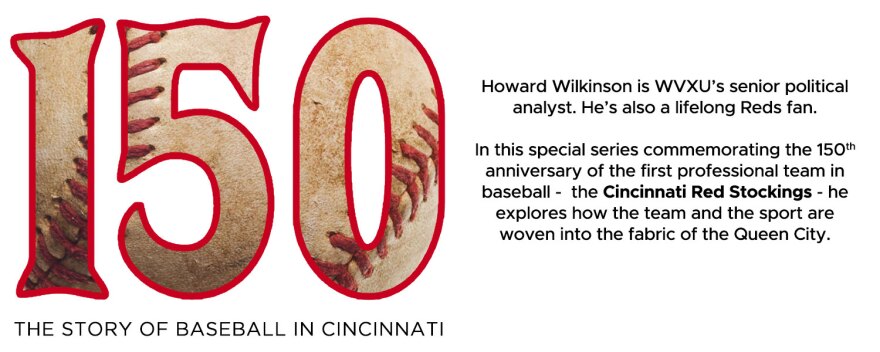The Cincinnati Reds have had their fair share of National League MVPs over the years – 10 players have won the award 12 times.
Four of them have been enshrined in the National Baseball Hall of Fame at Cooperstown – it would likely have been five, had Pete Rose not been banned from baseball in 1989 for betting on the game.
Because the Reds' list of MVPs is so extensive, we've broken out this roundup into two articles. You can read Part I here; Part II follows:
Pete Rose (1973)

The man played baseball like his hair was on fire.
Running full-bore down to first base – on a walk. Head-first, airborne belly-slides into third base, like a plane landing on the deck of an aircraft carrier. Barreling into catchers at home plate and sending them flying.
There was no one who ever played as hard as this Cincinnati-born "river rat" who came to the Reds in 1963 with much fanfare – fanfare that he turned into a Rookie of the Year award.
There are many records in baseball that will be hard to match, but Rose's all-time record of 4,256 base hits may stand forever. Who else is going to play at the major league level for 24 years and have 10 seasons of 200 or more hits? Hard to imagine in this day and age of Major League Baseball.
His one MVP year came in 1973, a year where the Reds won the division but got knocked out of the playoffs by the Mets, but not until Rose and the Mets' Bud Harrelson had a knock-down, drag-out fight that emptied the benches and set the New York crowd into a garbage-throwing frenzy.
In 1973, Rose had what was, more or less, a typical season for him when he was in his prime – he led the league in at-bats (680), hits (230), and batting average (.338).
During his career, he started in 16 All Star games at five different positions.
World Series titles came, finally, for the Big Red Machine in 1975 and 1976.
And then came free agency.
He signed as a free agent with the Phillies and played there until moving on to the Montreal Expos in 1984. In August of that season, Montreal traded Rose to the Reds to become player-manager. And it was the following season when he lifted a single into centerfield and broke Ty Cobb's all-time hits record of 4,191.
He retired as a player in the middle of the 1986 season, but remained on as manager.
But it was the 1989 investigation by the baseball commissioner's office into allegations of Rose betting on baseball – including the Reds – that was his downfall. It led to him being placed on baseball's permanently ineligible list and has cost him dearly – a plaque on the wall at Cooperstown.
He would be enshrined there now, with his teammates, but he has no one to blame but himself.
Joe Morgan (1975, 1976)

For those two years (and maybe more), there was no denying the fact that "Little Joe" Morgan was the single best player in Major League Baseball.
Amazing, considering how much wailing and gnashing of teeth there were among Reds fans with the blockbuster trade that brought Morgan, a nine-year veteran, from the Houston Astros to the Reds.
The Astros sent Morgan, Ed Armbrister, Jack Billingham, Cesar Geronimo and Denis Menke to the Reds for Lee May, Tommy Helms and Jimmy Stewart.
May and Helms were extremely popular with Reds fans. They had little idea who this "Little Joe" Morgan was.
They soon found out.
A superb base-stealer, Morgan had a rare combination of power and speed and the ability to make contact. His on-base percentage of .466 in 1975 and .444 in 1976 were jaw-dropping numbers.
Little wonder the Reds were the World Series champions in both of the years when "Little Joe" won the MVP.
To absolutely no one's surprise, Joe Morgan was inducted into the Baseball Hall of Fame in 1990, his first year of eligibility.
And a bronze statue of "Little Joe" greets fans coming into Great American Ball Park, along with statues of his teammates – Bench, Rose and Tony Perez.
George Foster (1977)

The heavy-hitting outfielder his teammates called "Yahtzee" – he loved playing the game in the clubhouse - had one of the greatest individual seasons any Red had ever had or has ever had since he was awarded the National League MVP in 1977.
Foster was a power hitter, but the numbers he put up in 1977 – a year when the Reds finished second, 10 games behind the Dodgers – are almost insanely good:
- Foster led the league in home runs (52), RBI (149), total bases (388) and slugging percentage (.631).
- He also had 197 base hits and a .320 batting average that season.
His 52 home runs and 149 RBI were Reds franchise records that still stand today.
Foster came to the Reds in a trade in 1971 that was definitely in the Reds' favor – the Reds sent minor league pitcher Vern Geishert and shortstop Frank Duffy to the San Francisco Giants, where Foster was playing with his childhood hero, Willie Mays.
The Big Red Machine of the 1970s was complete when manager Sparky Anderson asked Pete Rose to move from the outfield to third base in the middle of the 1974 season, allowing Foster to play left field every day. Foster became the final piece of "The Great Eight" – one of the post potent line-ups ever put on a baseball field.
Barry Larkin (1995)

The ultimate hometown kid who made good.
Larkin grew up in the Cincinnati suburb of Silverton in a family where all the Larkin kids were involved in sports (his brother Byron is the all-time scoring leader for the Xavier Musketeers basketball team).
He was a standout athlete at Moeller High School and went on to the University of Michigan where he was a two-time All-American and the first to win the Big Ten baseball MVP award twice.
The Reds made him their first-round draft pick in 1985. By the next season, his extraordinary defensive and offensive talent saw him make his major league debut.
Larkin won the NL MVP in 1995, a year when the Reds won the National League West crown and went to the playoffs. He hit .319 that year, with 15 home runs and 61 RBI.
But in fact, the next season, 1996, was probably the best of his 19-year major league career, with 33 home runs and 89 RBI. It was also the year when he became the first shortstop in history to record 30 home runs (36) and 30 stolen bases (32) in a single season.
At the age of 40, Larkin played his last major league game on October 3, 2004. In 2012, he was voted into the Baseball Hall of Fame in Cooperstown.
Joey Votto (2010)

Go to Great American Ball Park on any given day – or night – and count the number of kids and adults wearing jerseys with the name Votto and the number 19 on the back.
They are everywhere.
For the past 13 seasons, the left-handed hitting first basemen – a native of Toronto – has been the favorite of Reds fans – even in a year like 2019 when the 35-year-old has been off to a slow start at the plate.
Still, the influence Votto – considered one of the smartest hitters in the game – has had on his younger teammates like Jesse Winker and Derek Dietrich is immeasurable.
Votto was the Reds' second round draft pick in 2002. He labored in the minor leagues before getting his shot at being a major leaguer at a September call-up in 2007. After being called up Sept. 1, he hit a home run in his second major league at bat and hit .321 over 24 games.
In May 2009, he was batting .357 when he went on the disabled list, where he stayed for the next three weeks. It was reported that Votto was suffering from deep depression and anxiety over the sudden death of his father the summer before. He got the help he needed and was soon back in the line-up, finishing the season with a .322 batting average.
In 2010, Votto was on fire. He hit .324, with 37 home runs and 113 RBI. That was more than enough to earn him the National League MVP.




